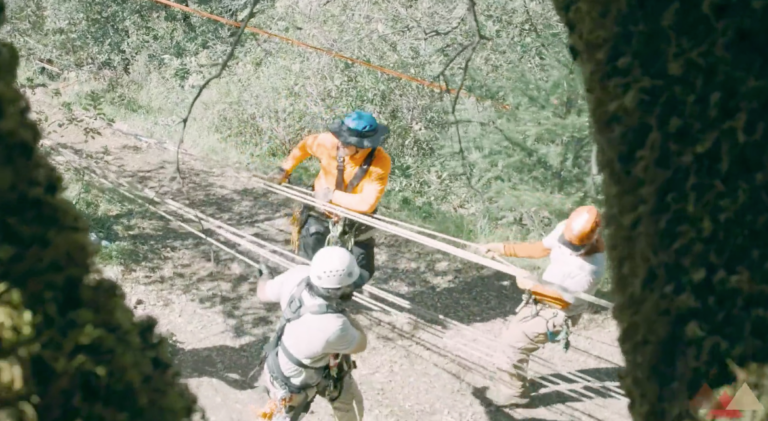Rescue Equipment Essentials
In rescue operations, every decision matters, and every tool is part of a larger system designed to ensure the safety of both rescuers and those being rescued. At Rescue Response Gear, we recognize that your gear isn’t just equipment—it’s a vital part of the interconnected system that keeps your team safe and effective in high-stakes environments.
When it comes to rescue, your team requires more than just the basics. You need a set of practical tools and real-world systems that empower them to act quickly, confidently, and seamlessly. Let’s dive into the essential elements of rescue operations and how the right gear can support each one, from patient transport to edge safety, to help your team deliver successful outcomes.
The Core Elements of Rescue Operations
To create a safe, effective, and cohesive rescue environment, we focus on six core elements of rescue: Patient Packaging and Transport, Edge Safety and Belay Systems, Knots and Force Multipliers, Anchors and Anchor Systems, Mechanical Advantage Systems, and High Directionals and Tensioned Track Systems (TTRS). Each of these elements represents a unique area of expertise, and together they form a complete rescue system.
Let’s explore how each element plays a critical role in successful rescue operations and the importance of choosing gear that seamlessly integrates into these systems.
1. Patient Packaging and Transport
Patient packaging and transport are at the heart of most rescue operations. Ensuring the patient’s stability and safety during transport is paramount. Gear designed specifically for patient transport, like litters, patient bags, and spine boards, is essential for maintaining stability over various terrain types. Quality patient packaging tools not only secure the individual but also make it easier for the rescue team to navigate complex environments while minimizing the risk of injury to the patient and rescuers alike.
Equip your team with patient packaging tools that are built for real-world challenges. By focusing on quality and practical design, these tools allow you to transport patients smoothly and securely through any environment.
2. Edge Safety and Belay Systems
Edge safety and belay systems are critical for operations near cliffs, steep inclines, or other drop-offs. Effective belay techniques and edge management tools help prevent accidental falls, ensuring both the safety of the rescuers and the person being rescued. Look for edge protection and belay gear that can handle variable load shifts and provide reliable backup in case of an unforeseen incident.
The right edge safety tools can mean the difference between a safe operation and a risky one. Our belay systems are designed to give you confidence, knowing that every movement is backed by reliable, high-quality equipment.
3. Knots and Force Multipliers
Knots and force multipliers are fundamental skills that enhance the effectiveness of other rescue elements, particularly when working with limited manpower or in high-resistance situations. Mastery of knots like the figure-eight or bowline allows rescuers to secure anchors and create connections that distribute force effectively. Paired with force-multiplying systems, these skills make it possible to control heavy loads with less effort, enhancing both safety and efficiency.
Ensure your team has the tools and resources to utilize knots and force multipliers effectively. Our equipment supports efficient, reliable knotting techniques and force distribution that’s crucial for challenging rescue scenarios.
4. Anchors and Anchor Systems
Every successful rope rescue relies on secure anchors. Natural anchors like trees or rock formations can be lifesaving, but artificial anchors such as anchor plates or bolts are necessary when natural anchors aren’t available. A well-established anchor system provides a stable foundation for the rest of the rescue operation, supporting both the rescuer and the rescuee through each phase.
Our selection of anchors and anchor systems gives you versatile options that adapt to various environments, ensuring a secure setup every time.
5. Mechanical Advantage Systems
Mechanical advantage (MA) systems, such as pulleys and progress capture devices, are essential when a rescue team needs to lift or lower heavy loads. By applying mechanical advantage, teams can multiply their strength, making it easier to raise or lower patients or equipment safely. Whether you’re performing a straightforward or complex lift, having the right mechanical advantage system can save time, reduce physical strain, and ultimately improve safety.
Choose pulleys, progress capture devices, and other mechanical advantage tools that are durable and designed for the demands of rescue work, ensuring every lift is controlled and manageable.
6. High Directionals and Tensioned Track Systems (TTRS)
High directionals and tensioned track systems (TTRS) provide elevated pathways that can navigate difficult terrain or obstacles. These advanced rigging setups are invaluable in environments where ground movement is limited or high above the ground, allowing rescuers to transport patients and equipment safely from point A to point B. High directionals create the stability needed to traverse obstacles with minimal risk, while TTRS provides the flexibility to work across varied environments.
Our high directional and TTRS solutions are engineered for extreme conditions, offering the strength and adaptability you need to manage complex rescues with confidence.
Why the Right Gear Matters
Rescue gear should be more than just equipment. It needs to integrate seamlessly into your existing systems to enhance the safety and effectiveness of your team. Our selection of tools and systems at Rescue Response Gear is built with these core elements in mind, providing practical solutions for real-world scenarios. From high-quality pulleys to durable anchor systems, each piece is designed to support your team’s skills, maximize efficiency, and ultimately save lives.
Equip Your Team with Rescue Response Gear
Whether you’re assembling a new system or upgrading your current setup, Rescue Response Gear has the tools your team needs to handle any rescue scenario with precision and confidence. Equip your team with gear that supports each element of rescue—keeping them prepared, safe, and ready for anything.
Shop Rescue Response Gear Today
Peace on your Days
Lance










